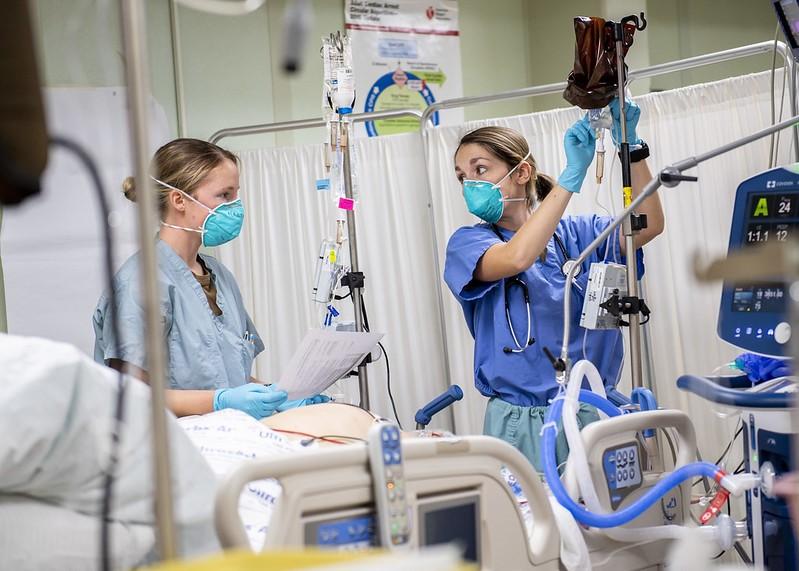A survey of more than 3.9 million US patients hospitalized amid the COVID-19 pandemic in 2020 to 2021 showed a worsening in the perceived quality of patient care, particularly in hospitals with lower prepandemic staffing and performance levels.
The RAND Corporation–led study said the results, published today in JAMA Health Forum, may reflect illness-associated hospital employee absenteeism.
Of the 3,900,887 respondents to the Hospital Consumer Assessment of Healthcare Providers and Systems (HCAHPS) discharged from 3,381 HCAHPS-participating hospitals in 2020 to 2021, 59% were aged 65 years or older, and 35% were receiving surgical or maternity care. Sponsored by the Centers for Medicare & Medicaid Services, the survey is routinely given to hospital patients after their release.
Overall 3.6 percentage-point quality decrease
HCAHPS survey summary scores were 1.2 percentage points (pp) lower than prepandemic scores for patients released from the hospital in quarter (Q) 2 of 2020 and −1.9 to −2.0 pp for Q3 2020 to Q1 2021, sliding to −3.6 pp by Q4 2021, a medium effect size for patient-experience measures. There was little geographic variation.
The steepest declines were in staff responsiveness (−5.6 pp) and cleanliness (−4.9 pp), possibly reflecting pandemic staffing shortages and the effects of COVID-19 prevention measures (eg, healthcare workers having to don personal protective equipment). Communication about medicines (−4.2 pp), care transition (−3.9 pp), overall hospital rating (−3.9 pp), communication with nurses (−3.4 pp), hospital recommendations (−3.3 pp), and communication with doctors (−2.9 pp) were moderately affected.
This unprecedented decline in patient experience was seen in every region of the United States, with relatively little regional variation.
Discharge information (−1.6 pp) and quietness (−1.8 pp) saw the least decline. Initially, hospital rating and recommendation measures showed smaller-than-average reductions but then dropped by Q2 2021.
HCAHPS summary scores declined most in hospitals with the lowest prepandemic staffing levels. Hospitals with lowest-quartile staffing saw the steepest decreases in scores, while those in the top quartile showed the lowest declines in most periods. Hospitals with better prepandemic quality had consistently smaller HCAHPS decreases, with effects at 5-star hospitals roughly 25% smaller than for their 1- and 2-star counterparts.
Hospitals with higher ratings fared better
"This unprecedented decline in patient experience was seen in every region of the United States, with relatively little regional variation," lead author Marc Elliott, PhD, said in a news release from RAND, a nonprofit research organization. "Hospitals with higher staffing levels and better overall pre-pandemic quality were more resilient and slower to see their decline. But eventually even their patients also reported worse experiences."
The decrease in the overall rating and hospital recommendations lagged the decline in more-specific patient experience measures, which the researchers said could reflect lower patient expectations at the beginning of COVID-19. But then the global ratings also fell to a similar degree as the pandemic continued.
"This pattern suggests that global ratings alone do not fully capture changes in specific patient experiences, nor do they identify the areas in need of improvement, especially in the face of unusual events such as a pandemic," Elliott said.




















